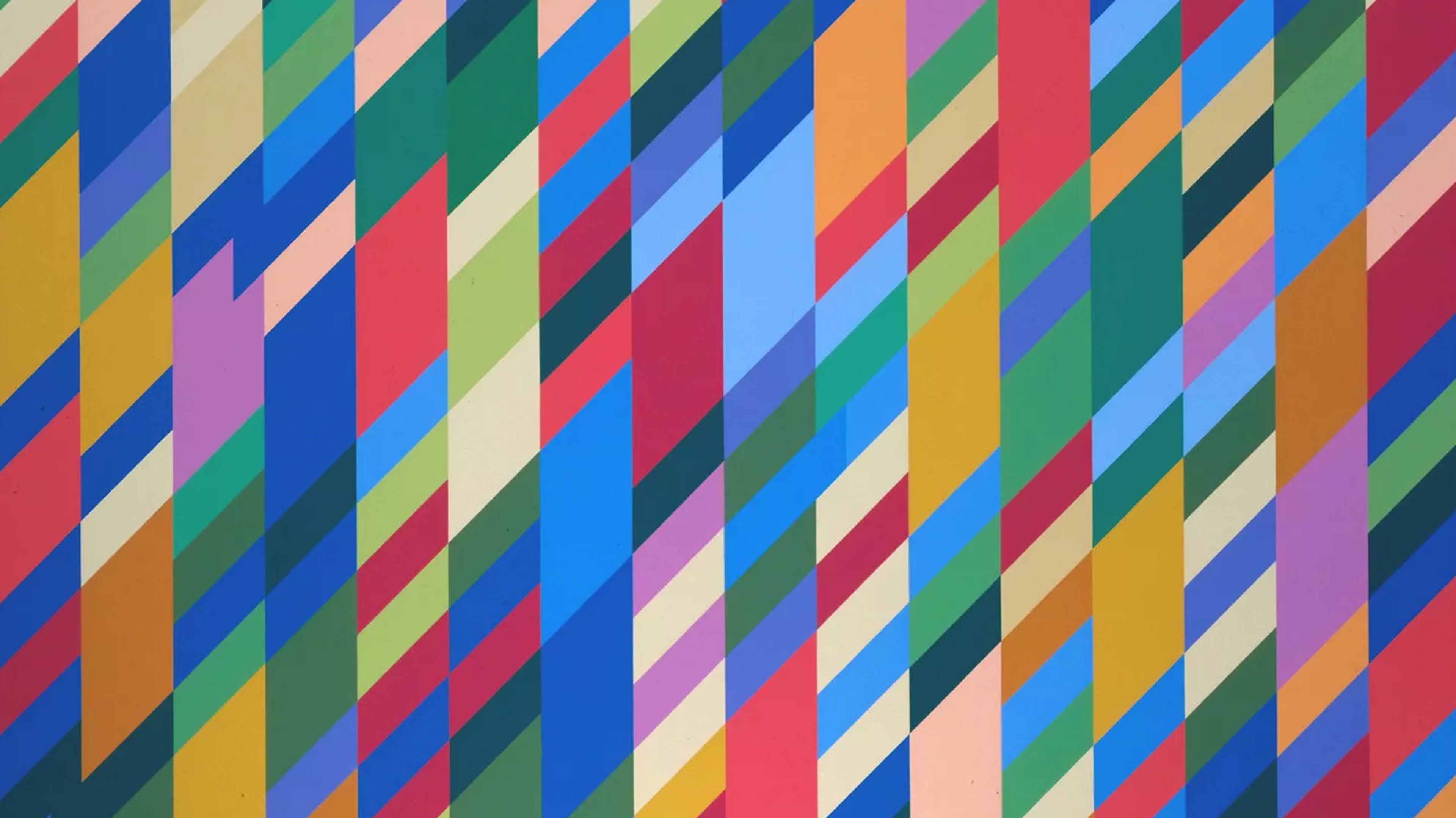British artist Bridget Riley, who is known for bold, blocky, and striped canvases of brilliant hues and contrasts, got her first taste of international celebrity back in 1965. Curator William Seitz included two of her paintings, Current (1964) and Hesitate (1964), in his groundbreaking exhibition at the Museum of Modern Art, titled “The Responsive Eye.” The eye-popping black-and-white squiggles of Riley’s Current adorned the catalogue cover, asserting Riley’s prominent position within the show. The exhibition situated her among an impressive roster of global artists whose artwork reconsidered ideas about perception. The group included American painters ranging from Morris Louis to Agnes Martin, along with Brazilian artist Almir da Silva Mavignier and a Spanish collective called Equipo 57. Along with Mavignier, Riley was considered part of a new wave of “Op artists” who exploited visual principles to make work that seemed to vibrate with new energy. Josef Albers, Salvador Dalí, and the museum-going public all swooned at Riley’s work.
While Op art has gone in and out of style, Riley herself is still working and is beloved on both sides of the pond. London’s Hayward Gallery is displaying a major Riley retrospective through January 26th, celebrating over six decades of the artist’s bold geometric abstratractions. Her hard-edged shapes and brilliant palettes have given way to infinite possibilities on her canvases. Riley’s work, which at first appears to be a collection of simple patterns, rewards sustained, careful looking; her work’s genius lies in the way her compositions gradually reveal a vital, dynamic interplay of shape and color. Yet Riley’s considerations reach far beyond the tricks and treats of optical games, urging viewers to rethink the way they see.
